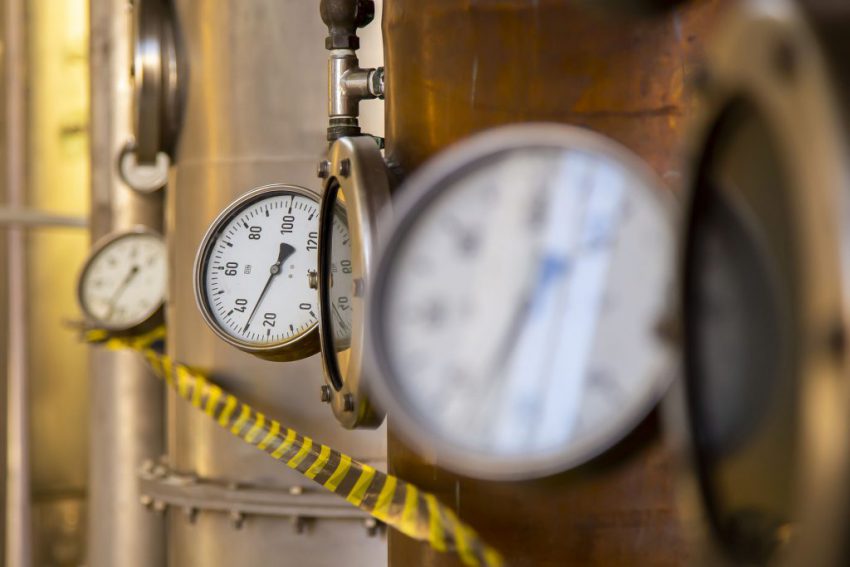Pressure is the force per unit area on a given surface.
In this case we have several units of measurement related to pressure:
mmHg – millimeters of mercury
mH2O – meters of water
psi – pounds per square inch
bar – bar
mbar – millibar
Terms
Within the concept of pressure there are some related terms:
- Absolute pressure which is the positive pressure from a complete vacuum.
- Gage or relative pressure is the difference between measured pressure and atmospheric pressure.
- Differential pressure is the difference between two pressure measurements, considering that neither is atmospheric pressure.
Atmospheric pressure can be used to measure flow or level quantities, among others.
It can also be called barometric pressure. It corresponds to the force per unit area exerted by the Earth’s atmosphere. It can be measured with barometer instruments.
Pressure gauges and vacuum gauges are used to measure pressure above (manometers) and below (vacuometers) the local atmospheric pressure.
types of barometers

Mercury Barometer
Uses mercury as a liquid because it has a large mass. They have a measuring column, where the liquid rises according to the ambient pressure.
Metal Barometer
These do not have a barometric column. They have lower accuracy. Among these there are the aneroid barometers (with gauge and internally free of pressure) and Vidi (with pointer, spring and metallic vacuum box).
pressure gauges

There are basically the following types of pressure gauges:
dead weight gauge
It has great accuracy. widely used for measuring other pressure gauges. Pressure is obtained by placing standard masses on a piston of known area.
liquid column manometer
This type of instrument is out of use. This is because the liquid to be used needs to be denser than water, for example metallic mercury. This liquid can leak into your piping causing contamination.
The advantage of this instrument is that it does not require calibration.
Elastic strain gauge
Better known as mechanical gauges. In this category we have the Bourdon Manometer, it can measure the pressure due to deformation caused by the pressure of the fluid.
Other types: spring-loaded piston gauge , where the plunger movement is passed to a pointer on the scale. bellows manometer, the lower the pressure in relation to the external pressure, the bellows returns to the resting condition. This can happen by the elasticity of the bellows or by the action of the auxiliary spring.
Manometer-pressure transducers
These convert pressure measurements into electrical quantities. Within this group there are strain pressure transducers, potentimetric, capacitive or piezoelectric.
Calibration of pressure gauges
The manometer, during calibration, is connected to a chamber filled with fluid. Pressure is raised using a pump or manual piston. The pressure builds up little by little. The measurement of the instrument is equal to the weight supported by the piston and divided by its area.
To issue a calibration certificate, several calculations are required that must follow standards. Calibration software can help make these requirements more practical.

